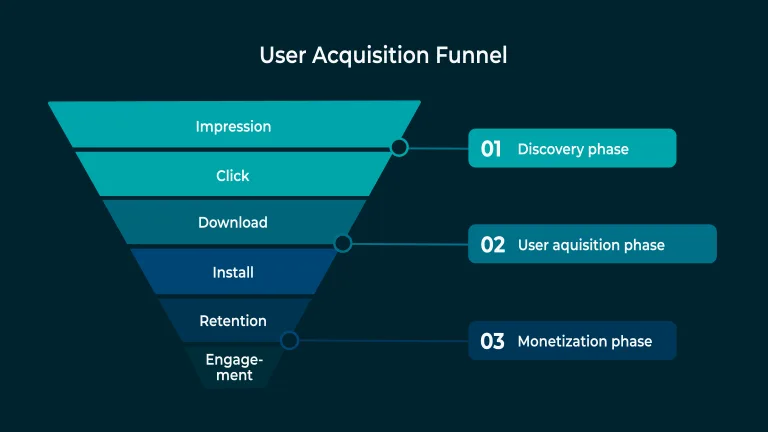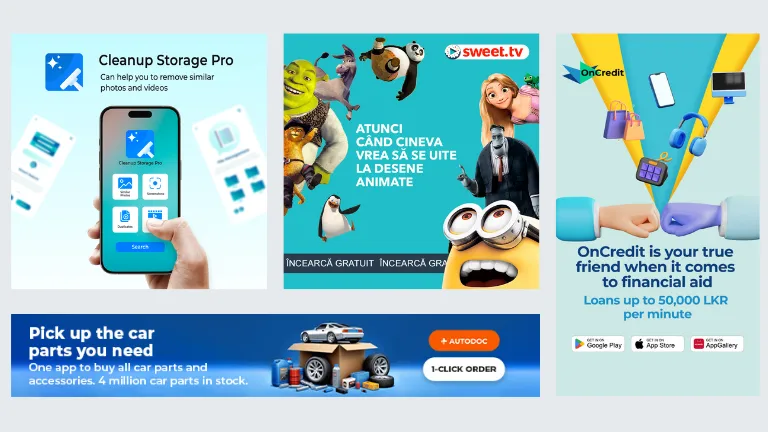Motion graphics have become ubiquitous, appearing in advertising, film, mobile applications, and on websites. They help convey a product or...
- CGI Production
- App Marketing Services
- Blog
- Contacts
- © 2025 ACQUISITION MOBI CYPRUS LTD
29 July, 2025
In today's highly competitive mobile app landscape, it is not enough just to launch a product; you need to focus on driving continuous user acquisition, a set of strategies designed to enhance engagement and boost installs. In the article, we'll explore proven UA strategies, key performance metrics and emerging UA trends in 2025.
User Acquisition plays a crucial role in mobile app strategy. UA accelerates growth and competitive advantage, enhances investment appeal, and enables future scaling. Without a strategy, you may have significant risks.
User Acquisition (UA) involves strategies and actions used to attract new users to mobile applications. It relies on targeting, engaging, and converting new users via different strategies. The primary objective is to drive app installations, purchases, or other interactions. They enhance a mobile app’s monetization potential from a long-term perspective.

Numerous mobile app user acquisition strategies are now available. Which one to choose depends on goals, advertising budget, niche, and application specifics. Below, discover the most widely used techniques.
To explore more details, follow the link.
UA managers measure metrics to assess performance and optimize campaigns. Below we listed the ones that matter most.
1. Conversion Rate (CR) tracks the users’ percentage completed a desired in-app action.

As an example, 500 users out of 2,000 completed the target action, so the CR would be 25%.
2. Churn Rate shows the users’ percentage stopped using the app, either by uninstalling or becoming inactive over a specific period.
3. CPI (Cost Per Install) is the average cost to acquire one app install.

With a $1,000 ad campaign generating 400 installs CPI will be $2.50 per install.
4. CPA (Cost Per Action) measures the cost of driving a single user action.

For instance, ad spend amounted $1,500. Conversions — 200. CPA will equal $7.50.
5. CAC (Customer Acquisition Cost) is the total cost to acquire one paying customer.

6. CPM (Cost Per Mille) means the cost per one thousand ad impressions.

7. Lifetime Value (LTV) estimates the total amount of revenue users will generate during the entire time. Critical Rule: LTV must exceed Customer Acquisition Cost (CAC) to ensure profitability.

8. ARPU (Average Revenue Per User) estimates the average amount of revenue generated per active user during a specific period.

9. ROAS (Return on Ad Spend) indicates how much revenue is generated for every dollar spent on advertising.

Consistent tracking and analysis of metrics helps to drive data-driven decisions and maximizes user acquisition campaigns ROI.
The mobile marketing landscape is evolving in 2025, driven by emerging technologies, new regulations, and changing user patterns. Explore the key UA trends shaping this year below.
Acquisition.mobi delivers end-to-end user acquisition solutions tailored for mobile apps in e-commerce, finance, and betting. Gain access to premium traffic, high-value offers, and actionable analytics for measurable growth.

Motion graphics have become ubiquitous, appearing in advertising, film, mobile applications, and on websites. They help convey a product or...
UGC is no longer exclusively “user-generated content.” With the rise of artificial intelligence, marketers are facing a new reality: you...